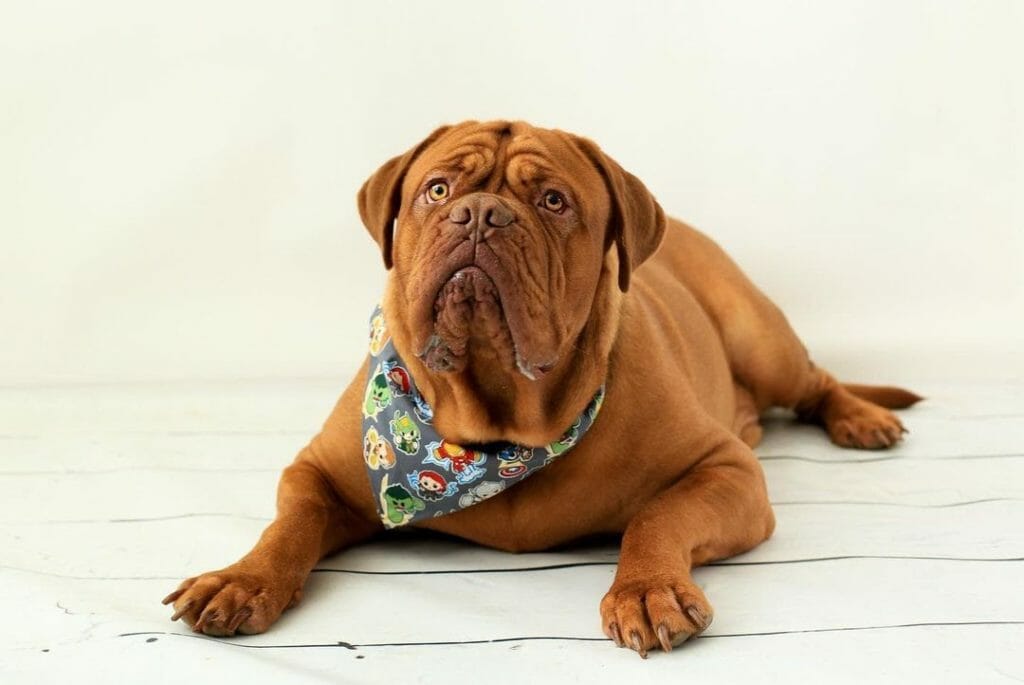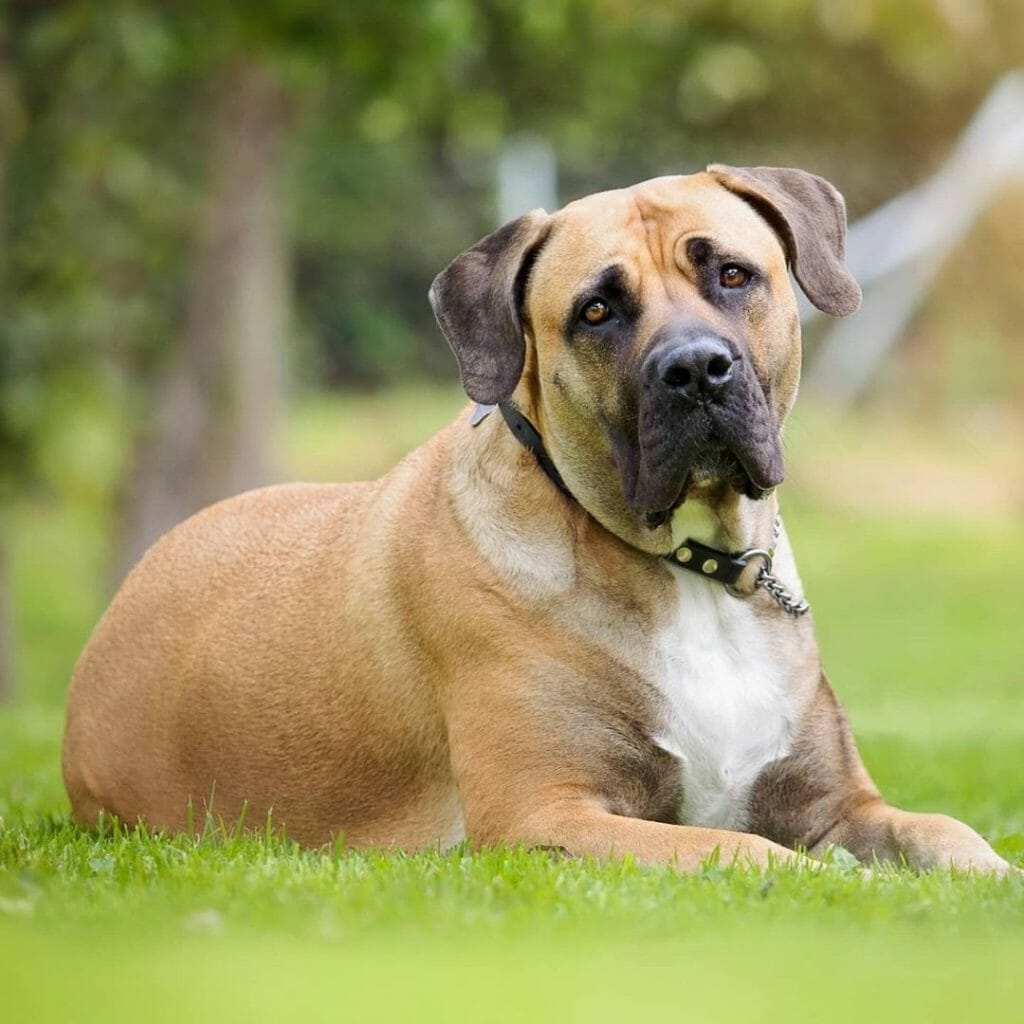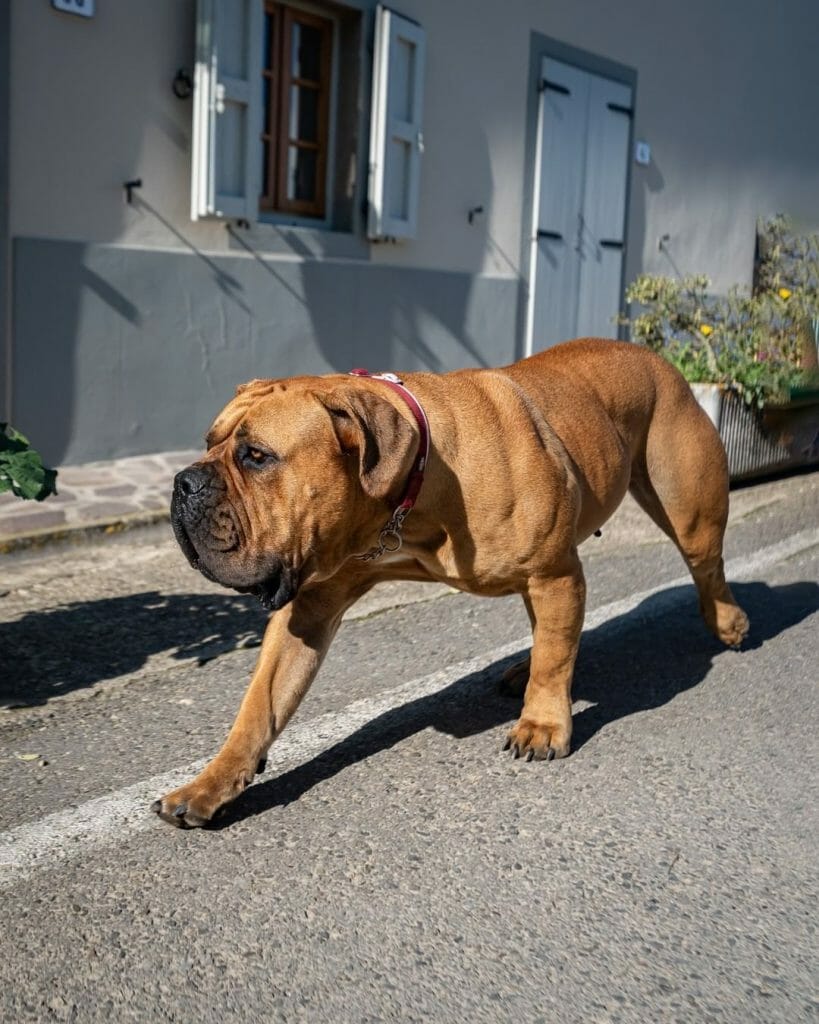Dogue de Bordeaux vs Boerboel: A Side by Side Comparison
Do you get weak on the knees at the sight of big dogs? The Dogue de Bordeaux and the Boerboel might tick all the boxes when it comes to your search for the perfect dog. They’re both massive, imposing, and suitable as companions hence why their popularity continues to soar worldwide.
Undoubtedly, both dogs share a wide array of similarities yet upon further scrutiny, you would find out how different they actually are from each other. To help you see the contrast, here’s a side-by-side comparison guide that highlights specific areas such as their origins, appearances, temperament, needs, and more!
Table of Contents
Breed Origins
Dogue de Bordeaux


France is proud to present the Dogue de Bordeaux or also known as the French Mastiff as one of its ancient breeds. Several documents would tell that he is a descendant of the great Molossus dog and, therefore, the Dogue is a Molosser as well. During the 12th century, this Mastiff breed was mainly used as a hunting companion who would go after boars, pigs, bears, and wolves. The list of animals he preys on would be enough to tell us that the Dogue is a powerful canine.
In the middle ages, the Dogue was discovered to be an excellent herder of cattle and livestock. The way he was bred to look including the strength he possesses also made him a fearsome guardian who will not hesitate to protect the farm animals from any predators around the field. Although the Dogue de Bordeaux declined in popularity in the 20th century, its numbers started to rise in recent years.
Boerboel


Hailing from South Africa, the Boerboel’s name is believed to roughly translate to “farm dog”. Admittingly, there aren’t a lot of details about his exact origins, but they are speculated to have come and developed from the dogs which the British, French, and Dutch settlers have brought with them in their journey to South Africa.
With the Boerboel dogs around, farmers had an easier time in the field. These canines were bred to protect and go after wildlife animals such as the big cats which freely roamed in the villages. Due to his many uses, the Boerboel has attracted several groups of people such as the soldiers, European settlers, and colonists, and they paved the way for him to reach American soil.
Boerboels have had challenges when it comes to keeping the bloodline pure, but thankfully, breeders aim to regain their pedigree.
Size, Appearance, & Coloring
Dogue de Bordeaux


Dogue de Bordeauxs have several identifying physical characteristics, but the most attention-grabbing feature is his size. Those who achieve the breed standards have a height at withers that can range from 23 to 27 inches. Meanwhile, the weight can be over 99 to 110 pounds.
To further describe the look, the Dogue is part of the brachycephalic dog breed group due to his short snout. His head is large and broad with a few wrinkles present on his face. If you look closely at his eyes, the color you’d see is hazel and the nose would be in the shade of isabela or brown.
There are only a few coat colors natural to the Dogue, who possesses a short double coat and they are:
- Fawn
- Red
- Isabela
White markings can be present anywhere in his body, but none should be found on the tip of his tail.
Boerboel


First impressions-wise, the Boerboel is well-developed in muscles, large in size, and strong. A male Boerboel typically carries traits that make him more masculine while female ones have softer features, so identifying the gender for this breed is easier. The forehead is often flat and the muzzle square. There can be a black mask on the muzzle, but not all Boerboels have it.
Expect him to be large as well. With his amazing proportions, this dog could eat more than a typical canine. He can be 22 to 27 inches tall and weigh around 150 to 200 pounds. His eyes are fascinating as they can be in various shades of brown, surrounded by well-pigmented eyelids. Down to his broad chest are sturdy and thick, athletic legs. He is covered by a short coat in different colors like the following:
- Fawn
- Black
- Piebald
- Brindle
- Cream
- Mahogany
- Brown
Temperament
Dogue de Bordeaux
Despite the impression a Dogue shows which are intimidating, the contrary is mostly true about this breed. He is gentle, fun, and loving toward his family members. Compared to most guard dog breeds, the Dogue might be the least aggressive type.
Being with kids, the Dogue will act differently. He’ll be more tolerant towards them, but never let them interact with each other with no adult to monitor their actions. The canine might accidentally end up hurting a toddler, say, for example, due to his size. Most Dogue de Bordeauxs are laid-back and easy to get along with. They are highly trainable, but a firm, experienced owner is best suited with him.
His desirability goes beyond his pleasing personality. The Dogue, if trained, will be the most dependable home protector should you be out for a while.
Boerboel
No matter what kind of foe the Boerboel meets, he will endlessly try to be aggressive against anyone that poses a threat. Different treatment will be experienced though if you are one of his loved ones. He tends to be gentle and he strives his best not to hurt anyone, especially the kids. Boerboels have a natural inclination to spend most of their time with their owners. You can definitely say that they are highly devoted to their family!
Despite all his good qualities, it can be challenging to train and manage this dog. First-time owners shouldn’t get this unless you are firm about employing the rules. He needs to be honed during puppyhood so he’ll grow up nice and behave as an adult canine. Since he’s bred to protect, training him about the boundaries is highly vital.
Exercise Needs
Dogue de Bordeaux


With his muscular appearance, anyone might think he needs to work out a lot, but the contrary is true! Dogues don’t require long periods of exercise since they only have moderate levels of energy. Moreover, the breed is highly prone to overheat, especially when the temperature is hot and humid.
An hour of drills that can either be divided for walks or plays is recommended. Make sure you don’t over-exhaust him, more so if he is still a puppy to avoid joint issues later in life.
Boerboel


Be ready to spend an hour of your day allocated for the exercise needs of the energetic Boerboel. He loves to romp around and take part in various rigorous activities. Walks can be nice too and he’ll love doing it when the weather is fine.
Due to his protective nature, it isn’t advisable to bring him to the doggy park, or else chaos among dogs would start.
Grooming Requirements
Dogue de Bordeaux
It’s quite manageable to maintain the short coat of the Dogue de Bordeaux. He may shed regularly, but a weekly brush can control its rate. Always ready your slicker brush to keep the home hair-free! Other grooming routines must include wiping the folds of his skin to keep them clean and free from infection. Wash him only if he’s dirty or smelly. Also, the nails should be kept short to maintain his proper posture.
Boerboel
To keep the Boerboel at its best appearance, regularly brushing his coat with a high-quality brush is needed. He’ll enjoy monthly dips and baths as well, so take this as an opportunity to teach him how to swim. He sheds at an average rate, so use canine-appropriate shampoo and products that can help you in keeping down his hair fall rate.
Health Problems
Dogue de Bordeaux
With only 5 to 8 years average lifespan, Dogue de Bordeauxs need special attention regarding their health. They’re generally healthy, yet they can be affected by several genetic predispositions such as:
- Brachycephalic syndrome
- Heart disease
- Hip dysplasia
Boerboel
The Boerboel is considered to be a healthy breed, but there are a few genetic problems he may suffer from. If you like this dog, be aware of what medical issues he can have:
- Hip dysplasia
- Elbow dysplasia
- Eye problems
Breed Popularity
The American Kennel Club sets out the current rankings of the following Mastiff dogs according to breed popularity. Check it out below:
Dogue de Bordeaux: 67th
Boerboel: 121st
Which Mastiff Is Right for You?
Look at your lifestyle and identify which dog would adjust well in your environment. You can add in your preference in looks as well as temperament. Nevertheless, both canines are great at guarding and being loyal to their families. The Boerboel lives considerably longer, but if the lifespan isn’t an issue, you can definitely consider the Dogue de Bordeaux.
